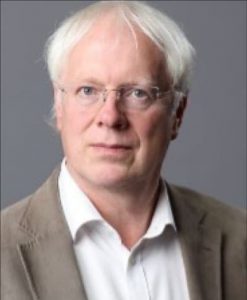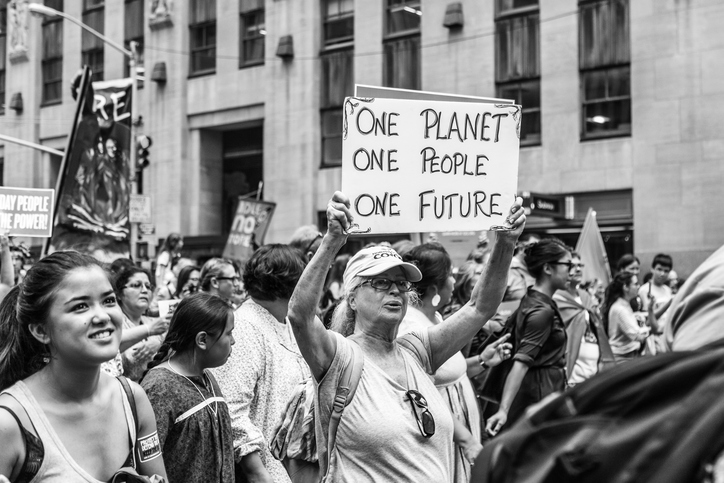John Irvine, FRSE, FRSC
University of St Andrews
Date: December 13, 2023
Time: 1000–1100h ET
Sponsors: Element Six, BioLogic, Gamry Instruments, TA Instruments – Waters, JPhys Energy
John Irvine, FRSE, FRSC
University of St Andrews
Date: December 13, 2023
Time: 1000–1100h ET
Sponsors: Element Six, BioLogic, Gamry Instruments, TA Instruments – Waters, JPhys Energy
 Proposal Submission Deadline: January 31, 2020
Proposal Submission Deadline: January 31, 2020ECS, in partnership with the Toyota Research Institute of North America (TRI-NA), a division of Toyota Motor Engineering & Manufacturing North America, Inc. (TEMA), requests proposals from young professors and scholars pursuing innovative electrochemical research in green energy technology for the ECS Toyota Young Investigator Fellowship for Projects in Green Energy Technology.
Today’s automotive industry faces three environmental and energy issue challenges: finding a viable alternative energy source as a replacement for oil; reducing CO2 emissions; and preventing air pollution. While the demand for oil alternatives—i.e., natural gas, electricity, and hydrogen—is expanding, oil remains the main source of automotive fuel. Further research and development of alternative energies can offset alternatives’ drawbacks and bring change. (more…)
Twelve. That’s how many years scientists predict are left to further prevent the consequences of climate change, before each half degree leads to worsening conditions, including risks of drought, floods, and extreme heat, according to UN Intergovernmental Panel on Climate Change.
Devastating hurricanes in the U.S., record droughts in Cape Town, and forest fires in the Arctic are already revealing the current effects of global warming, the IPCC report says, warning that every fraction of additional warming could worsen the impact.
 According to Science Magazine, a new science adviser may soon join President Donald Trump’s team. Trump announced on August 2, that he intends to nominate meteorologist Kelvin Droegemeier, a university administrator and former vice-chair of the governing board of the U.S. National Science Foundation, to be director of the White House Office of Science and Technology Policy. This decision made after 560 days, double the amount of time taken by any other president to name a White House Office of Science and Technology Policy director.
According to Science Magazine, a new science adviser may soon join President Donald Trump’s team. Trump announced on August 2, that he intends to nominate meteorologist Kelvin Droegemeier, a university administrator and former vice-chair of the governing board of the U.S. National Science Foundation, to be director of the White House Office of Science and Technology Policy. This decision made after 560 days, double the amount of time taken by any other president to name a White House Office of Science and Technology Policy director.
Droegemeier’s position would mean advising the president on technical issues and overseeing coordination of federal science policy. With Droegemeir in office, the science community has high hopes for the future of climate change and his ability to advocate for it.
By: Deepak Kumar, University of Illinois at Urbana-Champaign; Stephen P. Long, University of Illinois at Urbana-Champaign, and Vijay Singh, University of Illinois at Urbana-Champaign
 The aviation industry produces 2 percent of global human-induced carbon dioxide emissions. This share may seem relatively small – for perspective, electricity generation and home heating account for more than 40 percent – but aviation is one of the world’s fastest-growing greenhouse gas sources. Demand for air travel is projected to double in the next 20 years.
The aviation industry produces 2 percent of global human-induced carbon dioxide emissions. This share may seem relatively small – for perspective, electricity generation and home heating account for more than 40 percent – but aviation is one of the world’s fastest-growing greenhouse gas sources. Demand for air travel is projected to double in the next 20 years.
Airlines are under pressure to reduce their carbon emissions, and are highly vulnerable to global oil price fluctuations. These challenges have spurred strong interest in biomass-derived jet fuels. Bio-jet fuel can be produced from various plant materials, including oil crops, sugar crops, starchy plants and lignocellulosic biomass, through various chemical and biological routes. However, the technologies to convert oil to jet fuel are at a more advanced stage of development and yield higher energy efficiency than other sources.
We are engineering sugarcane, the most productive plant in the world, to produce oil that can be turned into bio-jet fuel. In a recent study, we found that use of this engineered sugarcane could yield more than 2,500 liters of bio-jet fuel per acre of land. In simple terms, this means that a Boeing 747 could fly for 10 hours on bio-jet fuel produced on just 54 acres of land. Compared to two competing plant sources, soybeans and jatropha, lipidcane would produce about 15 and 13 times as much jet fuel per unit of land, respectively.
The ECS Lecture during the 232nd ECS Meeting in National Harbor, MD, was delivered by Steven Chu. Chu is currently the William R. Kenan, Jr., Professor of Physics and Professor of Molecular & Cellular Physiology at Stanford. Previously, he served as U.S. Secretary of Energy under President Obama and was the co-recipient of the 1997 Nobel Prize in Physics for his contribution to laser cooling and atom trapping.
Chu’s ECS Lecture, “The Role of Electrochemistry in our Transition to Sustainable Energy,” focused on the risks society is facing due to changing climate, the evolving energy landscape, and the role of electrochemistry in providing critical technological advances.
“One degree Celsius does not sound like a lot, but just a couple of degrees warmer would make a dramatic difference,” Chu said. “If the Earth does warm by two degrees Celsius, Boston will be underwater.”
 After remaining steady for three years, global fossil fuel emissions are rising again and may increase again next year. But improved energy efficiency and a booming renewables market may offer a bit of a silver lining.
After remaining steady for three years, global fossil fuel emissions are rising again and may increase again next year. But improved energy efficiency and a booming renewables market may offer a bit of a silver lining.
“This year’s result is discouraging, but I remain hopeful,” says Rob Jackson, professor at the School of Earth, Energy & Environmental Sciences at Stanford University and chair of the Global Carbon Project, which released a series of reports in Environmental Research Letters.
“In the US, cities, states, and companies have seized leadership on energy efficiency and low-carbon renewables that the federal government has abdicated.”
The report appears with data published simultaneously in an Earth System Science Data Discussions paper led by Corinne Le Quéré of the University of East Anglia, who is also part of the Global Carbon Project.
Together, they forecast that global fossil fuel emissions will reach a record 37 billion tons of carbon dioxide in 2017, with total emissions reaching a record 41 billion tons, including deforestation. Atmospheric carbon dioxide concentration reached 403 parts per million in 2016, and is expected to increase by 2.5 parts per million in 2017.
By: Timothy H. Dixon, University of South Florida
 This summer I worked on the Greenland ice sheet, part of a scientific experiment to study surface melting and its contribution to Greenland’s accelerating ice losses. By virtue of its size, elevation and currently frozen state, Greenland has the potential to cause large and rapid increases to sea level as it melts.
This summer I worked on the Greenland ice sheet, part of a scientific experiment to study surface melting and its contribution to Greenland’s accelerating ice losses. By virtue of its size, elevation and currently frozen state, Greenland has the potential to cause large and rapid increases to sea level as it melts.
When I returned, a nonscientist friend asked me what the research showed about future sea level rise. He was disappointed that I couldn’t say anything definite, since it will take several years to analyze the data. This kind of time lag is common in science, but it can make communicating the issues difficult. That’s especially true for climate change, where decades of data collection may be required to see trends.
A recent draft report on climate change by federal scientists exploits data captured over many decades to assess recent changes, and warns of a dire future if we don’t change our ways. Yet few countries are aggressively reducing their emissions in a way scientists say are needed to avoid the dangers of climate change.
While this lack of progress dismays people, it’s actually understandable. Human beings have evolved to focus on immediate threats. We have a tough time dealing with risks that have time lags of decades or even centuries. As a geoscientist, I’m used to thinking on much longer time scales, but I recognize that most people are not. I see several kinds of time lags associated with climate change debates. It’s important to understand these time lags and how they interact if we hope to make progress.
Steven Chu is currently the William R. Kenan, Jr. Professor of Physics & Professor of Molecular & Cellular Physiology at Stanford University. You might know him better as the former U.S. Secretary of Energy, the first scientist to hold a Cabinet position.
He was also the director at the Lawrence Berkeley National Laboratory, Professor of Physics and Molecular Cell Biology at UC Berkeley, and head of the Quantum Electronics Research Department at AT&T Bell Laboratories.
His research includes optical nanoparticle probes and imaging methods for applications in biology and biomedicine and new approaches in lithium ion batteries, air filtration, and other nanotechnology applications.
Along with two colleagues, Chu won the 1997 Nobel Prize in Physics “for development of methods to cool and trap atoms with laser light.”
He is also going to give the ECS Lecture at the 232nd ECS Meeting this fall in National Harbor, Maryland.
Listen to the podcast and download this episode and others for free on Apple Podcasts, SoundCloud, Podbean, or our RSS Feed. You can also find us on Stitcher and Acast.
 The global development of industry, technology, and the transportation sector has resulted in massive consumption of fossil fuels. As these fuels are burned, emissions are released—namely carbon dioxide. According to the U.S. Environmental Protection Agency, combustion of petroleum-based products resulted in 6,587 million metric tons of carbon dioxide released into the environment in 2015. But what if we could capture the greenhouse gas and not only convert it, but potentially make a huge profit?
The global development of industry, technology, and the transportation sector has resulted in massive consumption of fossil fuels. As these fuels are burned, emissions are released—namely carbon dioxide. According to the U.S. Environmental Protection Agency, combustion of petroleum-based products resulted in 6,587 million metric tons of carbon dioxide released into the environment in 2015. But what if we could capture the greenhouse gas and not only convert it, but potentially make a huge profit?
That’s exactly what ECS member Stuart Licht is looking to do.
In a new study, Licht and his team demonstrate using carbon dioxide and solar thermal energy to produce high yields of millimeter-lengths carbon nanotube (CNT) wool at a cost of $660 per ton. According to marketplace values, these CNTs, which have applications ranging from textiles to cement, could then be sold for up to $400,000 per ton.
“We have introduced a new class of materials called ‘Carbon Nanotube Wool,’ which are the first CNTs that can be directly woven into a cloth, as they are of macroscopic length and are cheap to produce,” Licht, a chemistry professor at George Washington University, tells Phys.org. “The sole reactant to produce the CNT wools is the greenhouse gas carbon dioxide.”